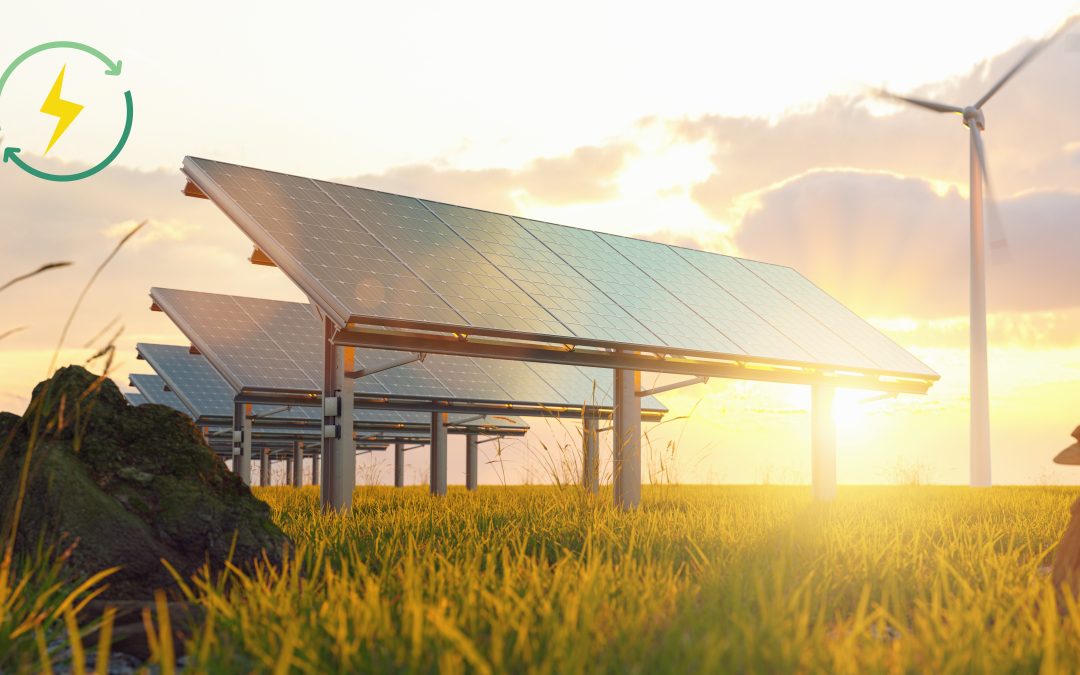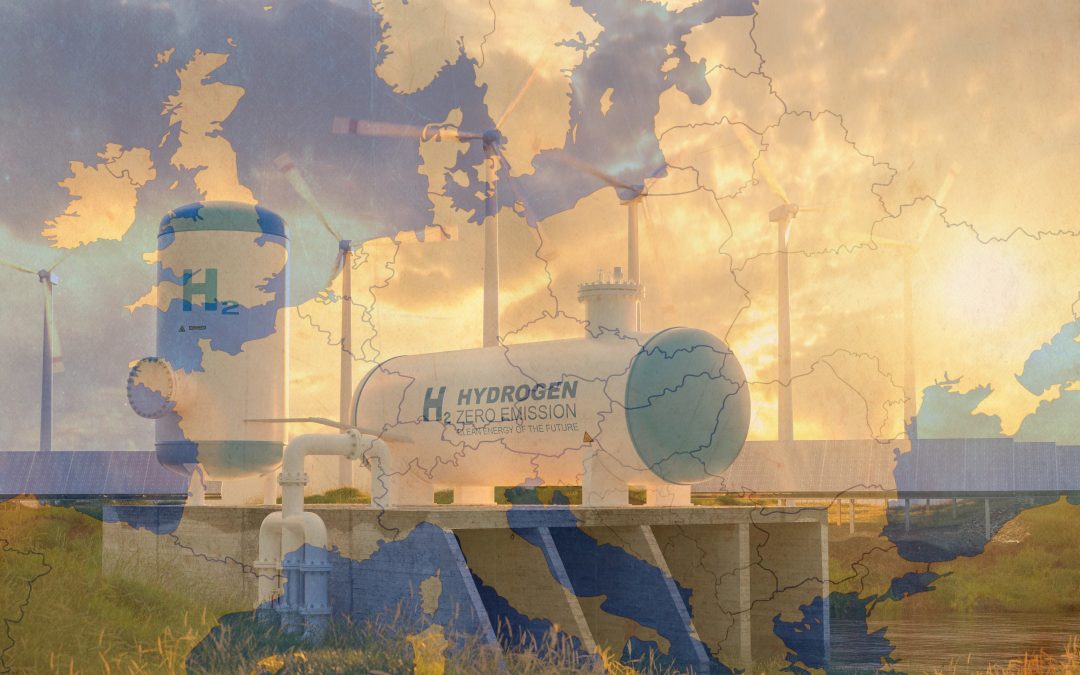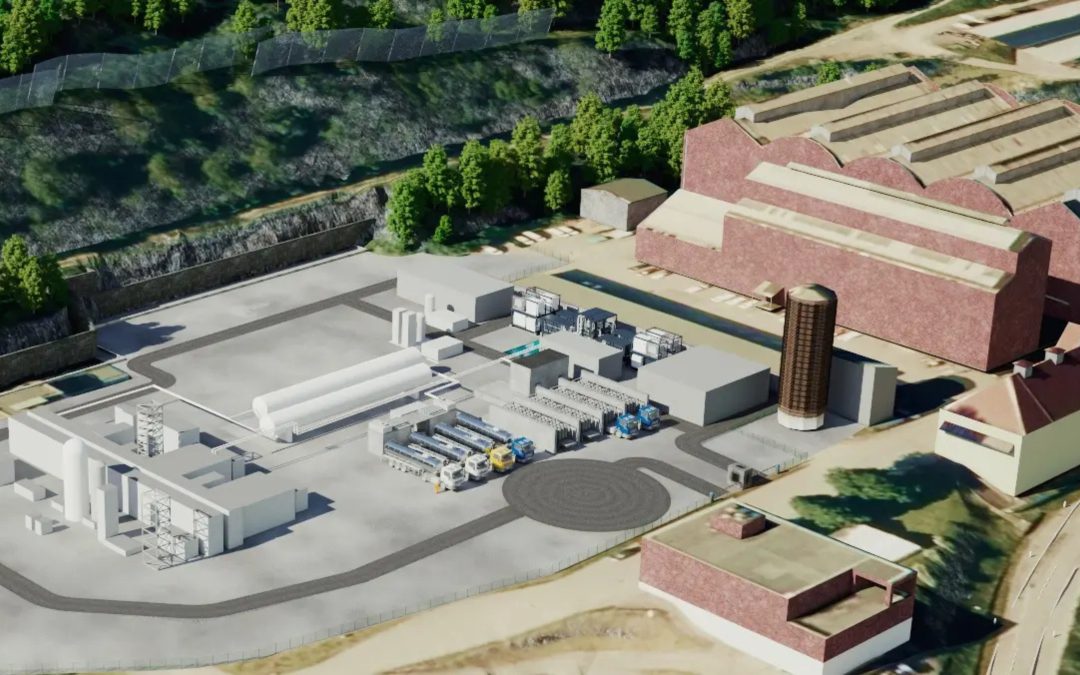Guarantees of Origin (GO) prices for longer-dated contracts dipped in week 13, amid returning interest in spot contracts ahead of the general 2024 disclosure deadline on 31 March 2025, with volatility also increasing. According to Veyt data.












Guarantees of Origin (GO) prices for longer-dated contracts dipped in week 13, amid returning interest in spot contracts ahead of the general 2024 disclosure deadline on 31 March 2025, with volatility also increasing. According to Veyt data.

The global tariffs imposed by the United States reach up to 49% in some countries. From Brussels, London and Berlin, leaders warn of inflationary impacts, supply chain disruptions and a direct threat to fair trade and the clean energy transition.

Germany activates an innovative financing scheme for its 9,040-km hydrogen backbone. The model prevents early users from bearing high costs and guarantees private investment through federal support.

Despite more than €32.9 billion in committed financing, one in five hydrogen projects in Europe has been canceled or put on hold. The Westwood Global Energy Group report estimates that only 17% of the current pipeline will be operational by 2030 unless rapid action is taken on regulatory frameworks, effective subsidies, and demand mandates.

Europe’s hydrogen market is facing serious hurdles to reach final investment decisions. Despite political momentum, only 4% of global projects reach that milestone, amid major challenges in financing, transparency, and implementation of programs such as IPCEI. Experts from the EIB, EBRD, and companies like Lhyfe reveal what is needed to unlock the value chain.

Norwegian Hydrogen has now made the investment decision for a new hydrogen plant in Rjukan, Telemark in Norway. This is part of the company’s strategy, which includes existing production of green hydrogen and several new projects currently under development across the Nordic region.

In an interview with Strategic Energy Europe, Jorge Paradela Gutiérrez, Minister of Industry, Energy and Mines, details how the region will surpass 20 GW of renewable energy by 2026, deploy 23 green hydrogen projects worth €5.5 billion, double the number of energy communities, and consolidate alliances with Germany and the Netherlands.

In 2024, contracted volumes in the European PPA market dropped by 11%, with a 59% fall in utility agreements. However, a record 316 long-term contracts were signed—driven by a 26% rise in corporate PPAs, which reached 5.2 GW. This shift triggered a wave of innovation in multi-technology, multi-buyer and storage-linked structures.

VSC converters, advanced cooling, and algorithmic control are the main challenges Norvento addresses in power electronics, with digital innovation, modularity, and local production as the keys to scaling and competing globally.

Electricity generation from renewable sources reached a record 46.9% in the European Union (EU) in 2024, with Denmark, Portugal, and Croatia leading the clean energy transition. Wind and solar remain the main growth drivers, while green hydrogen is emerging as a key technology for decarbonising industry and transport.

Carlos Hernández, Operations Manager at Forte Renewables, warns that lengthy permitting processes, financial uncertainty, and supply chain dependency are hindering the growth of renewable energy in Europe. During his participation in the forum organised by Strategic Energy Corp, the executive emphasised the need to adopt technological and regulatory solutions to ensure the long-term viability of projects.

According to Wood Mackenzie, standalone storage will make up the majority of the new energy storage capacity, but from 2027 onwards, the use of hybrid and co-located storage systems will grow significantly.

A report from the BDEW Bundesverband der Energie- und Wasserwirtschaft e.V. (German Association of Energy and Water Industries) highlights Germany’s rapid progress in developing its central hydrogen network. With an investment of €19 billion, the country plans to deploy a 9,000 km pipeline system to connect hydrogen production, storage, and consumption, solidifying its role as a strategic market in Europe.

The government is allocating 154 million euros to two new innovation and technology centers, located in Chemnitz and northern Germany, which will focus on improving hydrogen competitiveness and promoting its integration into the industry, addressing key challenges such as costs and infrastructure.

Copenhagen Infrastructure Partners (CIP) announced that its fifth flagship fund, CI V, has surpassed its €12 billion target at its final close.

The European Union aims to produce 10 Mt of renewable hydrogen and import another 10 Mt by 2030. However, 98% of projects are still at the concept or feasibility stage. A lack of financing, slow industrialisation, and uncertain demand threaten this target, while subsidy approval processes can take up to 24 months.

The second auction of the European Hydrogen Bank has received 61 bids from 11 countries, with 8 proposals focused on the maritime sector. The requests exceed 4.8 billion euros, four times the available budget of the Innovation Fund.

The sector is questioning the effectiveness of the current model and is proposing a new strategy: prioritising fewer projects, but with more funding, to ensure the viability and profitability of green hydrogen.

On 24 June, Madrid will host FES Iberia 2025, the key event in the renewable sector. Featuring participation from leading companies, a notable presence of Latin American firms, Autonomous Communities, and exclusive panels on offtakers and Southern Europe, this edition is set to establish itself as the must-attend meeting for the energy transition.

According to Eusebiu-Valentin Stamate, Policy Analyst at Issue Monitoring, the country is implementing regulatory and investment measures to strengthen transmission infrastructure and ensure system stability. He also points out that energy storage and green hydrogen will be key tools to stabilize the grid and meet the 85% decarbonization target by 2030 and 94% by 2050.

Ingeteam’s rectifiers, globally recognized and used in green hydrogen production, are already operational at Electric Hydrogen’s plants in San José, California, and Devens, Massachusetts. Furthermore, they will now also be integrated into the company’s projects in Europe, including the development and commissioning of 100-megawatt (MW) electrolysis plants.

Guarantees of Origin (GO) prices for longer-dated contracts dipped in week 13, amid returning interest in spot contracts ahead of the general 2024 disclosure deadline on 31 March 2025, with volatility also increasing. According to Veyt data.

The global tariffs imposed by the United States reach up to 49% in some countries. From Brussels, London and Berlin, leaders warn of inflationary impacts, supply chain disruptions and a direct threat to fair trade and the clean energy transition.

Germany activates an innovative financing scheme for its 9,040-km hydrogen backbone. The model prevents early users from bearing high costs and guarantees private investment through federal support.

Despite more than €32.9 billion in committed financing, one in five hydrogen projects in Europe has been canceled or put on hold. The Westwood Global Energy Group report estimates that only 17% of the current pipeline will be operational by 2030 unless rapid action is taken on regulatory frameworks, effective subsidies, and demand mandates.

Europe’s hydrogen market is facing serious hurdles to reach final investment decisions. Despite political momentum, only 4% of global projects reach that milestone, amid major challenges in financing, transparency, and implementation of programs such as IPCEI. Experts from the EIB, EBRD, and companies like Lhyfe reveal what is needed to unlock the value chain.

Norwegian Hydrogen has now made the investment decision for a new hydrogen plant in Rjukan, Telemark in Norway. This is part of the company’s strategy, which includes existing production of green hydrogen and several new projects currently under development across the Nordic region.

In an interview with Strategic Energy Europe, Jorge Paradela Gutiérrez, Minister of Industry, Energy and Mines, details how the region will surpass 20 GW of renewable energy by 2026, deploy 23 green hydrogen projects worth €5.5 billion, double the number of energy communities, and consolidate alliances with Germany and the Netherlands.

In 2024, contracted volumes in the European PPA market dropped by 11%, with a 59% fall in utility agreements. However, a record 316 long-term contracts were signed—driven by a 26% rise in corporate PPAs, which reached 5.2 GW. This shift triggered a wave of innovation in multi-technology, multi-buyer and storage-linked structures.

VSC converters, advanced cooling, and algorithmic control are the main challenges Norvento addresses in power electronics, with digital innovation, modularity, and local production as the keys to scaling and competing globally.

Electricity generation from renewable sources reached a record 46.9% in the European Union (EU) in 2024, with Denmark, Portugal, and Croatia leading the clean energy transition. Wind and solar remain the main growth drivers, while green hydrogen is emerging as a key technology for decarbonising industry and transport.

Carlos Hernández, Operations Manager at Forte Renewables, warns that lengthy permitting processes, financial uncertainty, and supply chain dependency are hindering the growth of renewable energy in Europe. During his participation in the forum organised by Strategic Energy Corp, the executive emphasised the need to adopt technological and regulatory solutions to ensure the long-term viability of projects.

According to Wood Mackenzie, standalone storage will make up the majority of the new energy storage capacity, but from 2027 onwards, the use of hybrid and co-located storage systems will grow significantly.

A report from the BDEW Bundesverband der Energie- und Wasserwirtschaft e.V. (German Association of Energy and Water Industries) highlights Germany’s rapid progress in developing its central hydrogen network. With an investment of €19 billion, the country plans to deploy a 9,000 km pipeline system to connect hydrogen production, storage, and consumption, solidifying its role as a strategic market in Europe.

The government is allocating 154 million euros to two new innovation and technology centers, located in Chemnitz and northern Germany, which will focus on improving hydrogen competitiveness and promoting its integration into the industry, addressing key challenges such as costs and infrastructure.

Copenhagen Infrastructure Partners (CIP) announced that its fifth flagship fund, CI V, has surpassed its €12 billion target at its final close.

The European Union aims to produce 10 Mt of renewable hydrogen and import another 10 Mt by 2030. However, 98% of projects are still at the concept or feasibility stage. A lack of financing, slow industrialisation, and uncertain demand threaten this target, while subsidy approval processes can take up to 24 months.

The second auction of the European Hydrogen Bank has received 61 bids from 11 countries, with 8 proposals focused on the maritime sector. The requests exceed 4.8 billion euros, four times the available budget of the Innovation Fund.

The sector is questioning the effectiveness of the current model and is proposing a new strategy: prioritising fewer projects, but with more funding, to ensure the viability and profitability of green hydrogen.

On 24 June, Madrid will host FES Iberia 2025, the key event in the renewable sector. Featuring participation from leading companies, a notable presence of Latin American firms, Autonomous Communities, and exclusive panels on offtakers and Southern Europe, this edition is set to establish itself as the must-attend meeting for the energy transition.

According to Eusebiu-Valentin Stamate, Policy Analyst at Issue Monitoring, the country is implementing regulatory and investment measures to strengthen transmission infrastructure and ensure system stability. He also points out that energy storage and green hydrogen will be key tools to stabilize the grid and meet the 85% decarbonization target by 2030 and 94% by 2050.

Ingeteam’s rectifiers, globally recognized and used in green hydrogen production, are already operational at Electric Hydrogen’s plants in San José, California, and Devens, Massachusetts. Furthermore, they will now also be integrated into the company’s projects in Europe, including the development and commissioning of 100-megawatt (MW) electrolysis plants.

Select the sector you
want to know more about

A leading China-based solar and storage provider is expanding its large-scale BESS portfolio across Latin America and preparing to enter Colombia once battery-integration regulations are approved.

At FES Colombia 2025, JA Solar highlighted the rapid expansion of distributed generation, which is now outpacing large-scale solar amid regulatory challenges and rising electricity demand.

An Argentine industrial services company has launched one of the country’s largest solar-powered carports, a 1.15 MW self-consumption system with 2,520 PV modules and capacity for 360 vehicles.